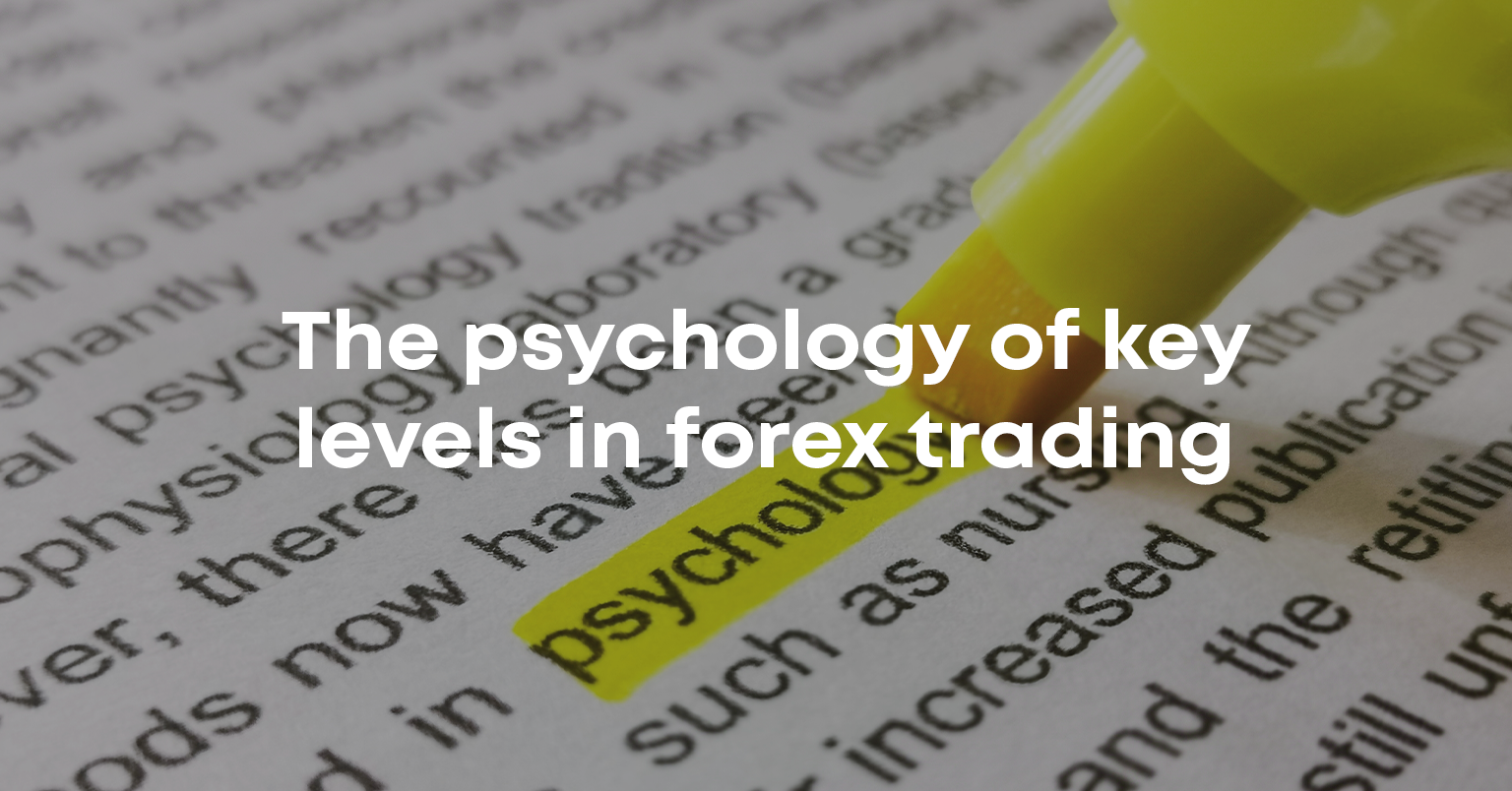The psychology of key levels in forex trading
The psychology of key levels in forex trading
It can be a good idea to keep your stop away from this area as you can imagine. Not only to improve your trading accounts but also to maintain a healthy trading mindset.
-

- by ALLFOREXRATING.COM
- 23rd April 2023 | Post Views: 1802

- For many forex traders, the psychology of the big players (bank traders) is a mystery
- Once you understand market structure, you can build a strategy that flows with it instead of fighting it.
For many forex traders, the psychology of the big players (bank traders) is a mystery. However, their behavior isn’t as mysterious as many people assume.
On that note, let’s shed some light on the matter.
The big players directly impact market structures. Understanding how they think, provides you with several insights. This knowledge helps you understand why the market ranges and breaks out and why key levels act as support and resistance.
Once you understand market structure, you can build a strategy that flows with it instead of fighting it. The reality is that most retail traders end up on the opposite side of the professional. Don’t let yourself fall into that position. But first, let’s start with a common misconception.
The big players don’t care about your stops
Have you ever been a victim of stop hunting? I know I once thought I had been. The truth is that retail traders’ stops don’t flash on the radar of bank traders at all.
The thing is that those professionals don’t even see retail stops on an individual level. To them, the sizes are just too small to be worth consideration.
Big Players care about groups of stops
Now, I don’t mean to say that professionals don’t care about stops altogether. Stop orders are very important to the institutional traders on an aggregate level. They care about where large groups of stops are sitting.
For example, imagine many retail traders’ stops are sitting at the same level. Even though a bank trader only knows their own books, this grouping of stops usually happens across several banks simultaneously. As such, they will use this information to make assumptions about the positioning of the market.
The price is attracted to the supply at key levels
Once the trader is aware of the supply of liquidity at a certain level, the market will often trade towards it. Why? Two reasons:
- The motivations of the trader
- Liquidity
For bank traders, the first motivation is safety.
The key levels are where the liquidity is the deepest and safest. If a bank trader needs to execute a trade, they need a supply of orders to execute against. If there’s is little to no liquidity at a specific price, the institutional traders are at risk. In this situation, they may have to rapidly re-adjust their positioning.
Conversely, if there is plenty of liquidity at a specific price, bank traders can go about their business. They’ll have no fear of the market getting away on them while they’re holding a large position that they are obligated to execute. This way, they can minimise their risk.
What does this all mean?
Once the supply is taken out at a key level, it will often reverse. This can make key levels excellent places to construct trade ideas.
The key level will be taken out before reversing
The next important point is that the price will often scoot through the key level before reversing.
Let’s think about this logically. Traders tend to put their stops on or behind the key level, not in front of it. So, if the supply is going to be taken out, then the price needs to go through the level. This is why retail traders think their stops are being hunted, while in reality, it’s just basic market movements at work.
It can be a good idea to keep your stop away from this area as you can imagine. Not only to improve your trading accounts but also to maintain a healthy trading mindset. Nothing is more frustrating than seeing your position stopped out just before price action reverses and hits your targets.
The big players are not so different from you
One final point. There’s no ‘special’ information you need to start using key levels in your forex trading. The charts are all a trader needs: they operate as a window into the psychology of the big players. This is even true of bank traders. While understanding the flow can be helpful, the bank trader still uses:
- Pattern recognition
- Support and resistance
- Fibonacci levels
The professional’s primary asset is experience in interpreting where key levels lie. Now, with the knowledge of how they operate, you can gain that experience too.
Write a Comment
The psychology of key levels in forex trading
It can be a good idea to keep your stop away from this area as you can imagine. Not only to improve your trading accounts but also to maintain a healthy trading mindset.

- For many forex traders, the psychology of the big players (bank traders) is a mystery
- Once you understand market structure, you can build a strategy that flows with it instead of fighting it.
For many forex traders, the psychology of the big players (bank traders) is a mystery. However, their behavior isn’t as mysterious as many people assume.
On that note, let’s shed some light on the matter.
The big players directly impact market structures. Understanding how they think, provides you with several insights. This knowledge helps you understand why the market ranges and breaks out and why key levels act as support and resistance.
Once you understand market structure, you can build a strategy that flows with it instead of fighting it. The reality is that most retail traders end up on the opposite side of the professional. Don’t let yourself fall into that position. But first, let’s start with a common misconception.
The big players don’t care about your stops
Have you ever been a victim of stop hunting? I know I once thought I had been. The truth is that retail traders’ stops don’t flash on the radar of bank traders at all.
The thing is that those professionals don’t even see retail stops on an individual level. To them, the sizes are just too small to be worth consideration.
Big Players care about groups of stops
Now, I don’t mean to say that professionals don’t care about stops altogether. Stop orders are very important to the institutional traders on an aggregate level. They care about where large groups of stops are sitting.
For example, imagine many retail traders’ stops are sitting at the same level. Even though a bank trader only knows their own books, this grouping of stops usually happens across several banks simultaneously. As such, they will use this information to make assumptions about the positioning of the market.
The price is attracted to the supply at key levels
Once the trader is aware of the supply of liquidity at a certain level, the market will often trade towards it. Why? Two reasons:
- The motivations of the trader
- Liquidity
For bank traders, the first motivation is safety.
The key levels are where the liquidity is the deepest and safest. If a bank trader needs to execute a trade, they need a supply of orders to execute against. If there’s is little to no liquidity at a specific price, the institutional traders are at risk. In this situation, they may have to rapidly re-adjust their positioning.
Conversely, if there is plenty of liquidity at a specific price, bank traders can go about their business. They’ll have no fear of the market getting away on them while they’re holding a large position that they are obligated to execute. This way, they can minimise their risk.
What does this all mean?
Once the supply is taken out at a key level, it will often reverse. This can make key levels excellent places to construct trade ideas.
The key level will be taken out before reversing
The next important point is that the price will often scoot through the key level before reversing.
Let’s think about this logically. Traders tend to put their stops on or behind the key level, not in front of it. So, if the supply is going to be taken out, then the price needs to go through the level. This is why retail traders think their stops are being hunted, while in reality, it’s just basic market movements at work.
It can be a good idea to keep your stop away from this area as you can imagine. Not only to improve your trading accounts but also to maintain a healthy trading mindset. Nothing is more frustrating than seeing your position stopped out just before price action reverses and hits your targets.
The big players are not so different from you
One final point. There’s no ‘special’ information you need to start using key levels in your forex trading. The charts are all a trader needs: they operate as a window into the psychology of the big players. This is even true of bank traders. While understanding the flow can be helpful, the bank trader still uses:
- Pattern recognition
- Support and resistance
- Fibonacci levels
The professional’s primary asset is experience in interpreting where key levels lie. Now, with the knowledge of how they operate, you can gain that experience too.
| # | Forex Broker | Year | Status | For | Against | Type | Regulation | Leverage | Account | Advisors | ||
| 1 |  |
JustMarkets | 2012 | 36% | 4% | ECN/STP | FSA, CySEC, FSCA, FSC | 1:3000* | 1 | Yes | ||
|---|---|---|---|---|---|---|---|---|---|---|---|---|
| 2 |  |
Hantec Markets | 1990 | 35% | 6% | ECN/STP | ASIC, FCA, FSA-Japan, FSC, JSC | 1:2000* | 100 | Yes | ||
| 3 |  |
Valetax | 2023 | 35% | 1% | ECN/STD | FSC | 1:2000* | 10 | Yes | ||
| 4 |  |
KCM Trade | 2016 | 32% | 3% | ECN/STD | FSC | 1:400* | 100 | Yes | ||
| 5 |  |
Plotio | 1983 | 31% | 2% | STP | HKGX, ASIC, SCB | 1:300* | 200 | Yes | ||
| 6 |  |
FISG | 2011 | 30% | 1% | ECN/STD | FSA, CySEC, ASIC | 1:500 | 0.01 | Yes | ||
| 7 |  |
ATFX | 2017 | 25% | 3% | Broker/NDD | FCA, CySEC, FSCA | 1:400* | 100 | Yes | ||
| 8 |  |
Octa | 2011 | 20% | 3% | ECN/STD | Regulation: CySEC, MISA, FSCA and FSC | 1:1000* | 5 | Yes | ||
| 9 |  |
Youhodler | 2018 | 20% | 2% | Exchange | EU (Swiss) licensed | Up to 1:500 | 100 | Yes | ||
| 10 |  |
Uniglobe markets | 2015 | 20% | 3% | ECN/STP | Yes | Up to 1:500 | 100 | Yes | ||
| 11 |  |
IEXS | 2023 | 20% | 6% | ECN/STP | ASIC, FCA | Up to 1:500 | 100 | Yes | ||
| 12 |  |
TradeEU | 2023 | 18% | 4% | CFDs | CySEC | 1:300* | 100 | Yes | ||
| 13 |  |
RoboForex | 2009 | 16% | 4% | ECN/STD | FSC, Number 000138/333 | 1:2000* | 10 | Yes | ||
| 14 |  |
Axiory | 2011 | 15% | 5% | Broker, NDD | IFSC, FSC, FCA (UK) | 1:777* | 10 | Yes | ||
| 15 |  |
FBS | 2009 | 13% | 4% | ECN/STD | IFSC, CySEC, ASIC, FSCA | 1:3000* | 100 | Yes |











